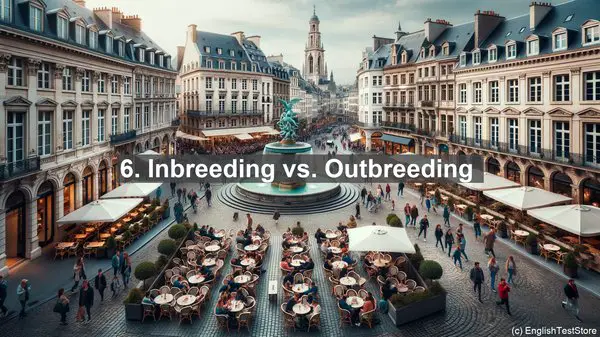Introduction
Welcome to today’s lesson on plant genetic engineering. As you delve deeper into this fascinating field, you’ll come across several terms that might seem similar but have distinct meanings. Today, we’ll focus on the top 10 words that often cause confusion. So, let’s get started!
1. Gene vs. Allele
The terms ‘gene’ and ‘allele’ are often used interchangeably, but they refer to different aspects of an organism’s genetic makeup. A gene is a segment of DNA that codes for a specific trait, while an allele is a variant of a gene. For example, the gene for eye color may have alleles for blue, brown, or green eyes. Understanding this distinction is crucial in genetic engineering, where manipulating specific alleles can lead to desired traits.

2. Transgenic vs. Genetically Modified
When discussing genetically engineered organisms, you might encounter the terms ‘transgenic’ and ‘genetically modified.’ While both involve altering an organism’s genetic material, they differ in the source of the introduced genes. Transgenic organisms have genes from a different species, while genetically modified organisms have altered genes from the same species. This distinction is significant, as it affects regulatory considerations and potential ecological impacts.

3. Homozygous vs. Heterozygous
In genetics, ‘homozygous’ and ‘heterozygous’ describe the presence of identical or different alleles, respectively, for a particular gene. Homozygous individuals have two copies of the same allele, while heterozygous individuals have two different alleles. This distinction is essential in breeding programs, where crossing homozygous individuals can result in offspring with desired traits.
4. Knockout vs. Knockdown
When studying gene function, researchers often use techniques to reduce or eliminate the expression of a specific gene. ‘Knockout’ refers to completely disabling the gene, while ‘knockdown’ involves reducing its expression. These techniques help in understanding gene roles and can have applications in developing disease-resistant crops or studying genetic disorders.
5. Transformation vs. Transduction
In genetic engineering, ‘transformation’ and ‘transduction’ are methods of introducing foreign DNA into an organism. Transformation involves directly introducing DNA, while transduction utilizes a viral vector to deliver the DNA. Both techniques have their advantages and are used in different contexts, such as creating genetically modified crops or delivering gene therapies.
6. Inbreeding vs. Outbreeding
Inbreeding and outbreeding are breeding strategies used to achieve specific genetic outcomes. ‘Inbreeding’ involves mating individuals with similar genetic backgrounds, often to preserve desirable traits. On the other hand, ‘outbreeding’ involves mating individuals with unrelated genetic backgrounds, which can increase genetic diversity. Both strategies have their applications in plant breeding, depending on the desired goals.
7. Hybridization vs. Crossbreeding
While both hybridization and crossbreeding involve combining genetic material from different individuals, they differ in the degree of genetic divergence. ‘Hybridization’ refers to crossing individuals from different species or genetically distinct populations, resulting in hybrids. ‘Crossbreeding’ involves mating individuals within the same species but with different traits. Understanding these terms is crucial in controlled breeding programs.
8. Genotype vs. Phenotype
In genetics, ‘genotype’ and ‘phenotype’ describe different aspects of an organism’s traits. ‘Genotype’ refers to the genetic makeup, the combination of alleles present. ‘Phenotype’ refers to the observable traits resulting from the interaction between the genotype and the environment. Distinguishing between these terms is essential in understanding how genes translate into observable characteristics.
9. Recombinant DNA vs. Plasmid
In genetic engineering, ‘recombinant DNA’ and ‘plasmid’ are commonly encountered terms. ‘Recombinant DNA’ refers to DNA molecules that are artificially created by combining genetic material from different sources. ‘Plasmids’ are small, circular DNA molecules often used as vectors to carry foreign DNA into host organisms. These tools are fundamental in genetic engineering techniques like gene cloning.
10. Selectable Marker vs. Reporter Gene
In genetic engineering experiments, ‘selectable markers’ and ‘reporter genes’ serve different purposes. ‘Selectable markers’ are genes that confer a trait, such as antibiotic resistance, allowing for the selection of organisms that have successfully taken up the foreign DNA. ‘Reporter genes’ are genes that produce an easily detectable product, such as fluorescence, indicating the presence or activity of the gene of interest. Both are valuable tools in genetic engineering research.
